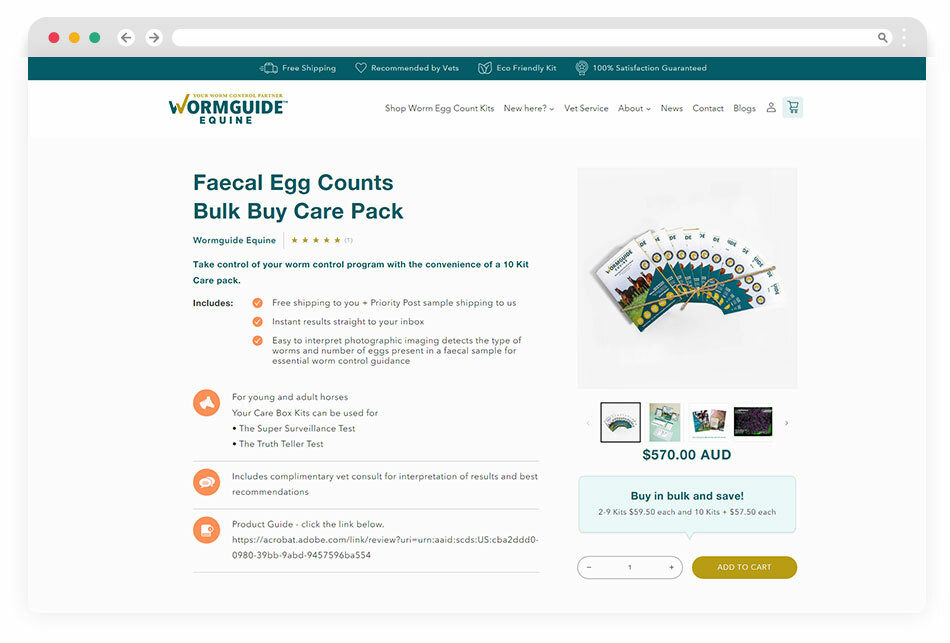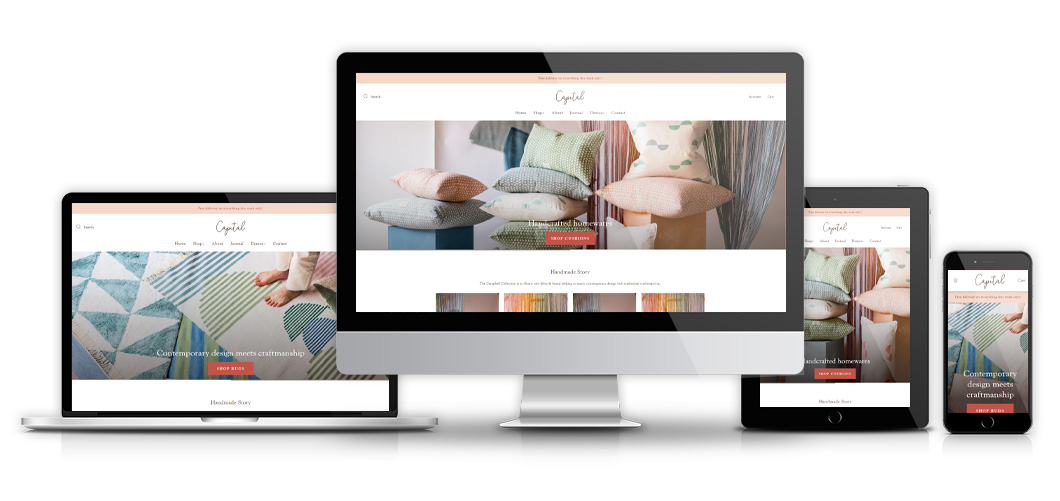I hope you enjoy reading this blog post.
If you want to discuss your website, we're here to help! Talk to Johannah.

Building an E-Commerce Business, The Lessons on Moving Fast from McKinsey
McKinsey is a global management consulting firm and provides lots of research about business practice.
They recently wrote an article called “Building an e-commerce business: The lessons on moving fast”.
With consumers moving online in reaction to coronavirus restrictions, companies will need to learn how to launch new e-commerce businesses and quickly. Although the article focuses on large corporates, the team at Confetti Design think there are plenty of lessons that small businesses can learn from the McKinsey article.
As the full implications of COVID-19 are still unknown, there is emerging evidence that points to a significant shift from retail “bricks-and-mortar” to e-commerce and online selling, as customers find shops closed and are limited in their ability to leave the house. This is backed by data that shows e-commerce jumped from 15 to 20% in China and a whopping 81% in Italy. These dramatic growth stats are just for February to March this year!
How long does it take to create an ecommerce capability? We disagree with McKinsey!
We agree with McKinsey that businesses can create a working e-commerce site in much less time than they think. In their estimation an e-commerce site can be running in less than 4 months. Our experience with building small business e-commerce sites however is it can be far speedier, with many sites being developed in less than a month. In fact, we have examples of our small business e-commerce websites being up and running in less than two weeks – if product, pricing, content and images are ready to go.
We recently worked with Purely Christmas, who are passionate about applying an aesthetic sensibility to Christmas decorations. The Founder of the business had spent 15 years in retail and had a great understanding of what she wanted to offer. Confetti Design was able to launch the website within four weeks, working closely with the Founder who was hands-on with product description and uploading products to meet a tight deadline.
Before work starts on launching an e-commerce presence, small business owners need to be practical and logical. In some cases, rather than attempting to launch a full-blown digital business across all markets at once, a strategy would be to go to market fast with a narrow offering and in limited localities. This will help to gain strong traction and then scale up and out aggressively. This ‘tight offering’ strategy is supported by current supply chain challenges. There is nothing worse than being enticed by a product or service only to find the items is ‘out of stock’ online. I have personally experienced this multiple times in past weeks.
Our customer, Boastshed 7 source premium beach gear, accessories and skincare that is carefully curated from around the globe. Boatshed 7 started their e-commerce website with a smaller product offering, rather than the large range of beach products they had on offer. This enabled their marketing team to learn as they sold beach products and to offer a more tailored product that was targeted to a specific type of customer. As small businesses learn more about their customer, they can add more products to the product offering thus adding value to existing customers and broadening your reach to new customers. This is what Boatshed 7 did!
Whether you are starting up a business or thinking about your current digital marketing, give us a call.
We can help.
Marketing ecommerce websites
Marketing is the key element of e-commerce websites. An understanding of the customer decision journey from complete lack of awareness to the moment a customer landed on the home page for the first time is of the utmost importance. We would suggest you begin your marketing effort well before launch, up to nine weeks before the launch, but considering the climate we are in you want to think creatively about this part of the prep work.
Just a few ideas are:
-
- Consider who has the same customer as you and would they share your offering to their database?
- Create content to share on multiple platforms that solve your ideal customers problems as it relates to your products, linking back to your website
-
- How to docs
- Lists of resources
- Opinion pieces
- Videos
- Lists of articles
-
- Create a sign-up offer to bring people onto your email list with the intention to not sell immediately but nurture them to eventually become purchasers
- During COVID-19 consider your customer and what is important to them. As you prepare your offer or terms perhaps you offer a portion of proceeds to assist someone or something that is in alignment with your customer values
- Drive as much traffic as you can to your site either engaging in organic SEO either yourself or from an agency driven strategy, ADwords campaigns, re-marketing or Google shopping to build your authority and also potential email lists as well as customers.
Measure!!!
We absolutely agree with McKinsey on this one.
One of the great benefits with e-commerce websites is the ability to measure traffic and conversion in real-time with tools like Google Analytics. You can set up goals for tracking giving you real insights into how effective your website is performing. It allows you to track the progress that matters so that you can learn, adapt, and drive continual improvement. It is not enough to measure overall conversion or conversion by channel. Instead, small businesses need more granular metrics, such as:
-
- identify relevant customer groups
- measure micro-conversions per group
- then improve continually – make changes to the shopping experience to increase website conversion
- what is the current path to a goal ?
- how many steps it takes to get to a goal?
- where are you losing visitors?
One of our customers, MyLollies, offers a large range of sweets and confectionary. The team at MyLollies are active Google Analytics users, who regularly monitor and make changes to their product placement and offers in order to successfully increase conversion.
The main message here is that the launch of an e-commerce website is not a separate project, but much more an ongoing program of continual improvement which will bring success.
Product and service offering tweaking
Not all ideas will work and sell well online. McKinsey gave an example of staff-curated bundles of products that were based on common occasions, such as birthdays. This tested really well with customers in pre-launch, but simply didn’t perform well in reality. Small businesses need to be prepared to cut product bundles or special offers if they are not working.
By keeping to a weekly review schedule, you can pivot away from poor ideas and generate new ones constantly until you find ones that work. Every week the improvements and lessons accumulate, and by month three, the e-commerce business has matured into a state at which a good sales day isn’t a victory but business as usual.
Building an e-commerce presence from scratch is no small undertaking for business. It was great to read and confirm our experience that a clear plan that is properly structured, can not only deliver an e-commerce website, but do it far faster than you might think is possible.
If you would further reading, an article from last year that discusses the 3 elements of successful ecommerce website can be found here.
LINK: https://confettidesign.com.au/3-elements-of-a-successful-ecommerce-website/
Reference: McKinsey Digital, Building an e-commerce business: lessons on moving fast

Johannah Barton
Johannah is founder and owner of Confetti Design, a leading Melbourne Shopify Agency. Her extensive background in fashion, interior design, sales and marketing contributes to the Agencies great ability and reputation. She creates content that helps small businesses navigate the online space helping them to consider their website as a sales tool.
Read more





